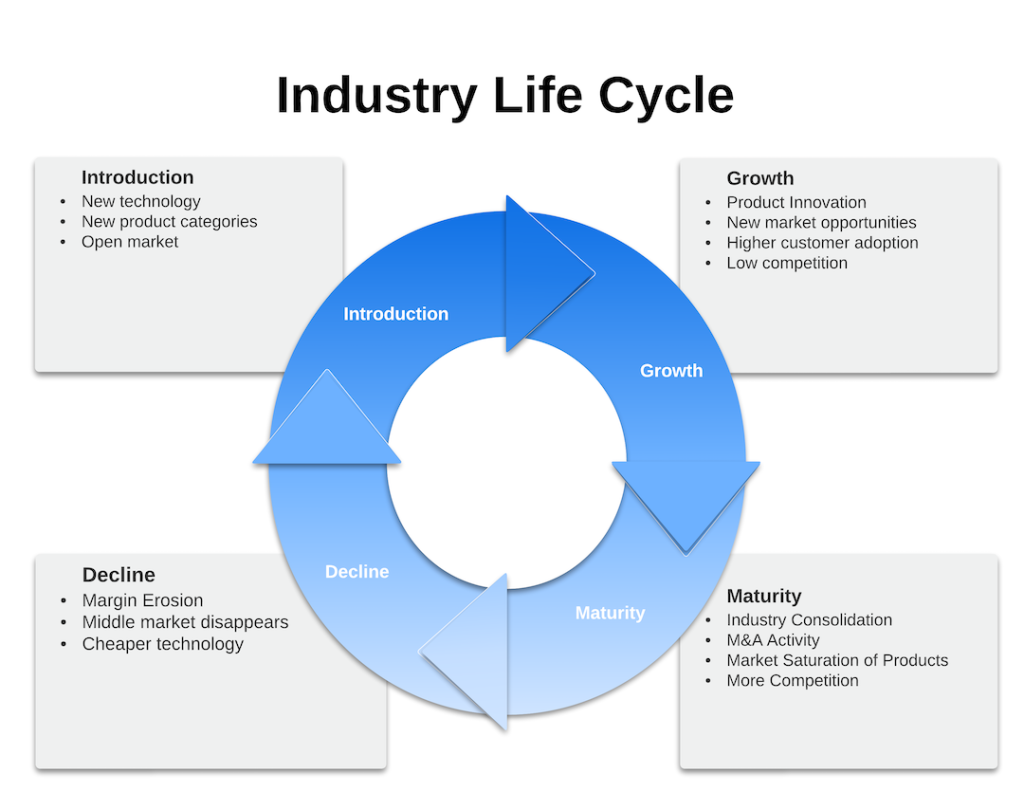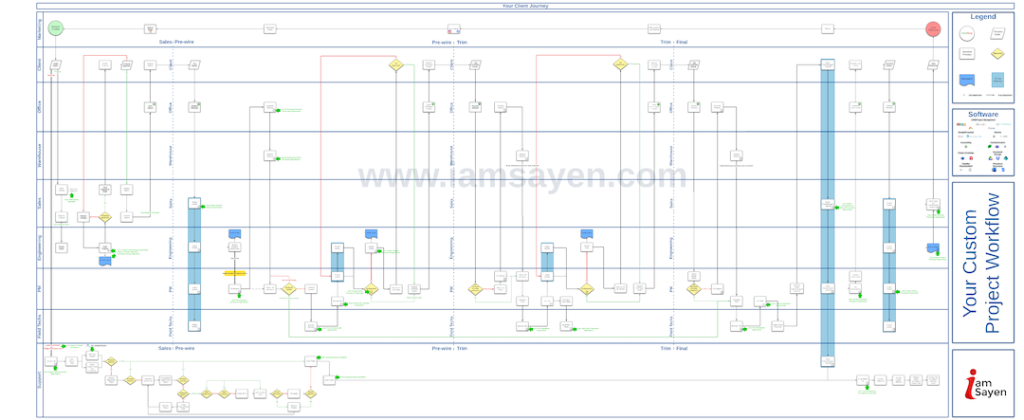
Many small business owners do not start out with well-defined business processes, and it is no different within the custom integration industry. Businesses begin by offering a unique product and service, leading to a process that is built organically over time as each client’s unique needs are fulfilled. In the beginning, businesses must figure their operations out along the way while also navigating the chaos that comes from starting a business.
As the business begins to grow, recruiting employees becomes imperative to handle the expanding workflow. Employees, such as office managers and lead technicians are hired based on their skill set to fill open positions, however, a challenge can emerge when these individuals encounter knowledge gaps on the job, prompting them to develop their own ‘processes’ to complete the work.
Over time, as more employees are brought into the company, these ‘specialized’ processes become engrained in the collective knowledge, resulting in compounded grey areas of the business. While some business owners will write these off as ‘bad habits’ that the employee had before they joined the team, the truth lies in the absence of proper training tailored to the company’s unique approach. Remember, they were hired because they had the right skillset…but were they shown how to perform that job correctly within the company?
Eventually, a breakpoint will emerge, marked by cracks in the operational structure; customer service begins to suffer; employees feel as if they are fighting fires every day; business growth stagnates because the organization was built around one or more subconscious processes that hinder efficient operations and the ability to scale.
When the business hits this stage, it is important to take a step back and evaluate how processes can be streamlined to promote growth. Here are the steps we take to help clients create a foundation for scaling.
Take an Honest Look at Your Business
If you aren’t sure whether your business processes are subconscious or not, ask yourself the following questions:
- Can you show a client, GC, architect, or even your employees the company’s Project Management Process?
- Have you preserved the untold amount of knowledge that your company has? Having it tucked away in the heads of your employees is not preservation because what would happen if a key employee got sick, or worse, left? All that knowledge leaves with them, returning you to square one.
- Do you have established standards like SOPs and checklists so that your team can meet and exceed your client’s expectations?
- Do you have a specific employee training and onboarding program in place to scale? Job shadowing is not a training or onboarding program. And also, how would you delegate tasks to employees in the event you have to downscale?
Evaluate Market Cycles
Sometimes cracks can come from outside the organization, beyond your control. All product categories within an industry have phases, and if you aren’t paying attention, these phases can also affect your organization’s efficiencies, growth and employee morale.


- Introduction Phase: The industry or product is new. There are some early adopters (clients) who will pay handsomely for your solution and kickstart the industry or product and through word of mouth, your client base grows.
- Growth Phase: The products and services continue to innovate which leads to new market opportunities and higher customer adoption, all while maintaining low competition due to a high barrier to entry into the industry.
- Mature Phase: The need for organizations to grow lowers the barrier to entry, thus increasing competition. This need also fuels industry consolidation, mergers and acquisitions, and market saturation of products. This activity is starting to impact profit margins.
- Decline Phase: As the battle for growth and market share continues, margins start to erode further, the middle market disappears, and cheaper technology starts to replace what were once high-ticket sales.
“Lifecycles are inherent in every new business and industry. The key is to focus on what you can control – your own business.”
Jason Sayen, Founder – Process Architect and Business Development of I AM SAYEN LLC
While the final phase above may appear gloomy, it is not. At the moment in the CI Channel, many product categories are transitioning from the ‘Maturity phase’ into the ‘Decline phase’ and organizations with well-defined processes will be able to capitalize on emerging market opportunities (e.g., lighting fixtures, energy solutions, and wellness) as they enter the ‘Introduction phase.’ This lifecycle is inherent in every new business and industry. The key is to focus on what you can control – your own business.
How to Begin Taking Action
Process documentation should be a team effort. When key employees are included in the exercise, they bring their specific knowledge of the process into the discussion, which can help with process improvement. As a group, you can discuss the ‘knowledge gaps’ that may exist and decide if they are helpful to the process or if they need to be removed. Also, if your employees are part of the process, your chances of accountability and adoption increase dramatically.


First, establish a visual workflow of the overall process. In Lean Six Sigma we call this ‘Value Stream Mapping.’ Begin by creating a start and end point for a process, then document the steps to get from start to finish. Along the way, identify who is responsible, and which steps add value or decrease value.
Identify the steps that decrease value and remove. In addition, determine which steps need supporting documentation, such as standard operating procedures (SOPs) and checklists, and make sure to connect them to the map. This means that when you have a visual reference such as a process map, you have a way to show employees ‘how’ the work gets done resulting in a higher chance of retention. The written documentation becomes the ‘what’ such as SOPs and checklists and, when you start with a visual workflow, you have a blueprint that shows you how to develop the written documentation. The two combined become ‘Workflow Documentation.’
Why? Because 65 percent of adults are visual learners.
Now that you have an operations blueprint that shows how the work gets done, you can start to standardize communication and software at various milestones across the identified project phases.
Implementing the Process Documentation
Armed with your list of SOPs and checklists, you can now assign these to the team members for individual creation. There are plenty of SOP templates available to choose from online. A great exercise with your team is to write the names of every project on post-it notes and stick them to the corresponding phase and milestone on the map. This will give your team a visual reference of where each project is in process and open a discussion of the current issues that are related to each project.
It takes about two months before a new behavior becomes automatic. Now that you understand how to create a strong visual workflow, you can apply these principles into building a client journey that maps out how a project moves through your company from start to finish. This document can be used to identify bottlenecks in your projects during weekly meetings. Can you find them on the map? You should be able to. The visual now helps you quickly understand where the project is stuck and what must happen for it to move forward. This exercise also helps you to maximize your software to follow your process.
You can also use the visual workflow to train and onboard new employees. During a one-hour meeting, you should be able to take the new employee through the workflow so that they understand how work is completed, helping to eliminate any knowledge gaps or bad habits that they may have. The process in turn helps to create transparency across departments. Employees from different departments can see what is happening upstream before the project gets to them and downstream after they have completed their work. This can have an enormous impact on efficiency within your organization and align your team.
For larger organizations (25 or more employees), you may want to look at software that can digitize and automate your process documentation. Products like Ninety.io, Trainual, Whale or Playbook Builder can help you develop your SOPs, store them digitally and make them accessible to your entire team. You can also create employee onboarding programs that get assigned to new employees and provide feedback upon completion.
Takeaway
Businesses will never be 100 percent efficient. Even assembly lines are not 100 percent efficient. They all have a rate of failure, and the goal is to use process improvement to minimize that percentage. Problems will arise. The key is to be able to quickly determine if they are outside of or within your control. The more you can control that which you can control, the more efficient your business can become.



